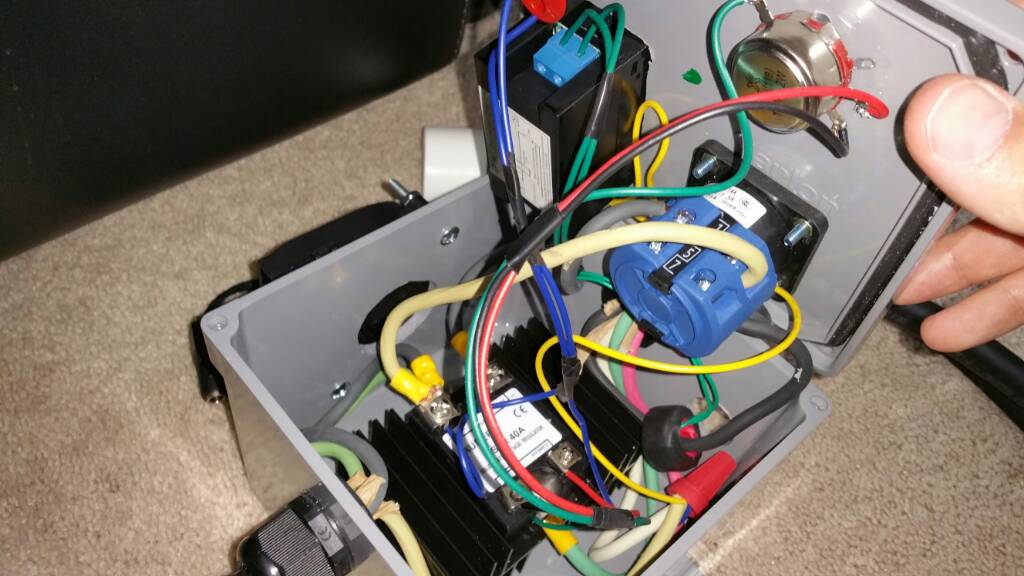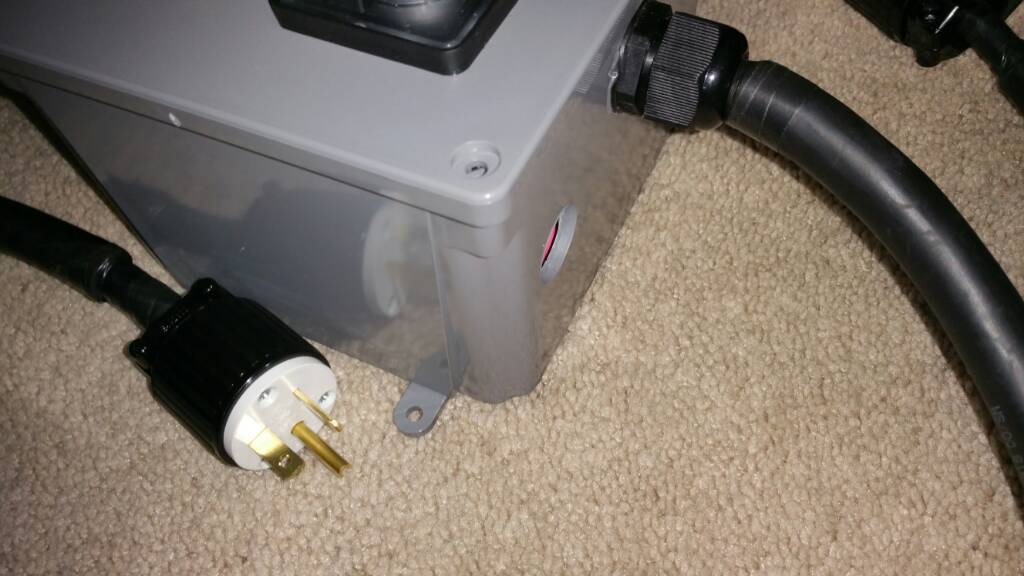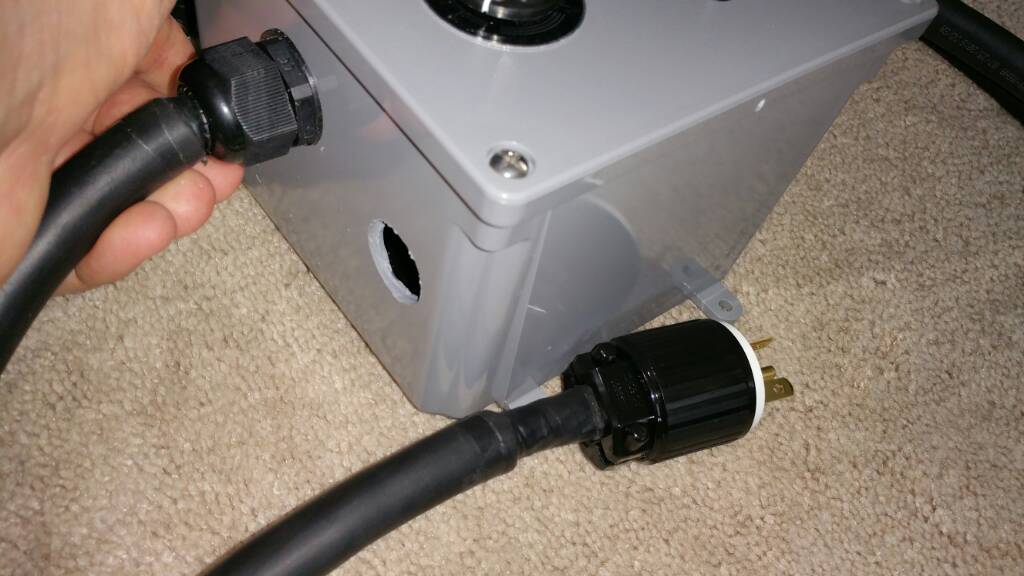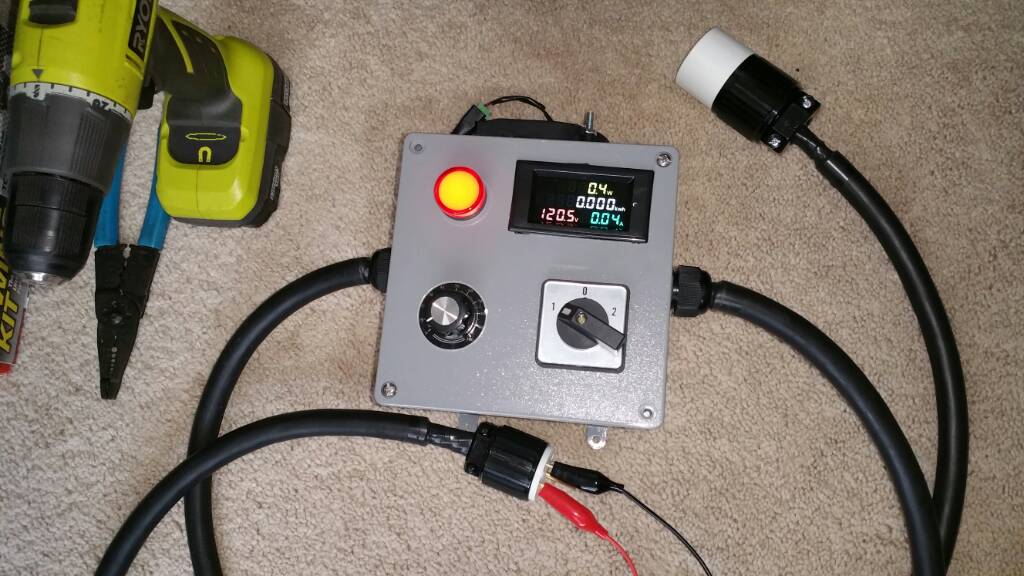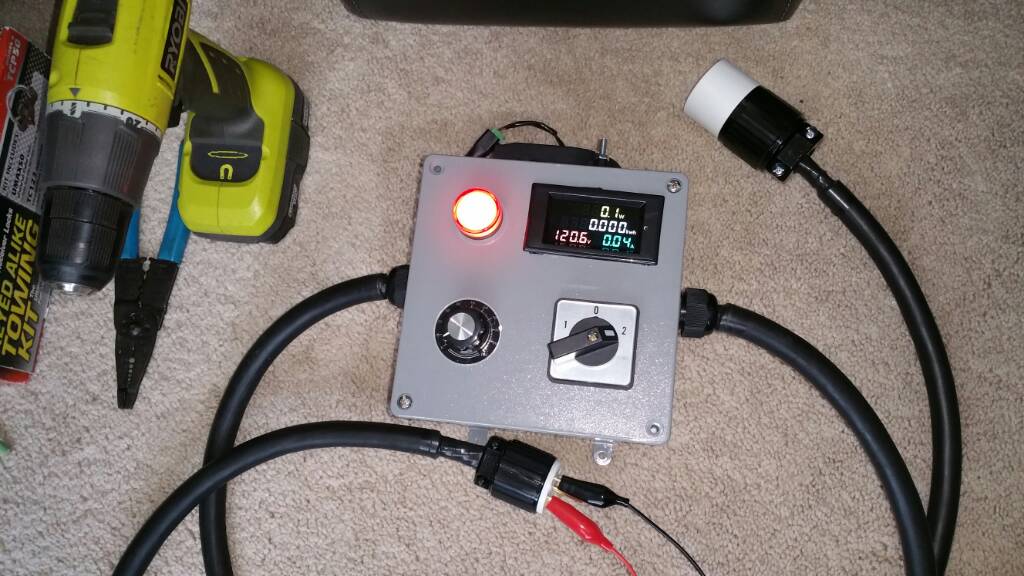Jbrew
Well-Known Member
- Joined
- Jan 17, 2017
- Messages
- 184
- Reaction score
- 19
I tried searching this on google but didn’t find too much. I wasn’t really sure the proper wording for asking it. If its been answered before I’m very sorry.
Here’s what I have going on. Built a 120v 20 amp control panel, running a 2250watt tri clamp element off of it. Just finished the build and did a water test Saturday. Started with hot water out of the tap at about 120* F. Took about 15 minutes to bring it up to 142* at which point I put it into auto tune which took another 20 minutes or so for it to complete and leveled off at 152 which I set the PID for. I then Put it in manual mode at 100% to bring it to a boil. About 40 minutes later the breaker tripped with water temp at about 200*. I flicked it back on And set it to 90% to get to a boil. It went another 40 minutes or so and then My fuse holder began to distort from heat that I installed in the brewery panel.
So here’s my concerns:
I had a 20 amp agc glass fuse installed, the wire and fuse holder got hot enough to melt the plastic holder. I have this wired from the 120v input to the ssr load input. The ssr output to the outlet for the heating element never got hotter then Luke warm. Its distorted to the point that it no longer makes contact so I cannot take resistance readings of it, but I’m guessing that the fuse holder created too much of a voltage drop. I will admit, the fuse holder was something I had laying around. It is 12 gauge, but I think it might be rated for automotive use, ie. Low voltage DC. Bad idea using it. I’m assuming I can go without a fuse on the element load circuit as the breaker should trip if it pulls too much. I’ve seen a few brewery control panel build diagrams with and without fuses/breakers in them
I know that the 2250 watt element is above the 80% capacity of the circuit pulling about 18.75 amps, but the 10g 120v boil coil is the same wattage and rated for a 20 amp circuit. NEC I believe says that a breaker is only rated to handle 80% of its rating for continuous load and that a load shall not exceed 80% of the circuits rating.
Anyone here running a 20 amp setup without any issues? I guess between the breaker tripping, the melted fuse holder and running up to 19 amps continuously for possibly an hour or more for heat up makes me pretty nervous. I just picture the wiring in my walls just lighting up.
Thanks all for the advise.
Here’s what I have going on. Built a 120v 20 amp control panel, running a 2250watt tri clamp element off of it. Just finished the build and did a water test Saturday. Started with hot water out of the tap at about 120* F. Took about 15 minutes to bring it up to 142* at which point I put it into auto tune which took another 20 minutes or so for it to complete and leveled off at 152 which I set the PID for. I then Put it in manual mode at 100% to bring it to a boil. About 40 minutes later the breaker tripped with water temp at about 200*. I flicked it back on And set it to 90% to get to a boil. It went another 40 minutes or so and then My fuse holder began to distort from heat that I installed in the brewery panel.
So here’s my concerns:
I had a 20 amp agc glass fuse installed, the wire and fuse holder got hot enough to melt the plastic holder. I have this wired from the 120v input to the ssr load input. The ssr output to the outlet for the heating element never got hotter then Luke warm. Its distorted to the point that it no longer makes contact so I cannot take resistance readings of it, but I’m guessing that the fuse holder created too much of a voltage drop. I will admit, the fuse holder was something I had laying around. It is 12 gauge, but I think it might be rated for automotive use, ie. Low voltage DC. Bad idea using it. I’m assuming I can go without a fuse on the element load circuit as the breaker should trip if it pulls too much. I’ve seen a few brewery control panel build diagrams with and without fuses/breakers in them
I know that the 2250 watt element is above the 80% capacity of the circuit pulling about 18.75 amps, but the 10g 120v boil coil is the same wattage and rated for a 20 amp circuit. NEC I believe says that a breaker is only rated to handle 80% of its rating for continuous load and that a load shall not exceed 80% of the circuits rating.
Anyone here running a 20 amp setup without any issues? I guess between the breaker tripping, the melted fuse holder and running up to 19 amps continuously for possibly an hour or more for heat up makes me pretty nervous. I just picture the wiring in my walls just lighting up.
Thanks all for the advise.




